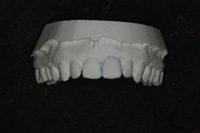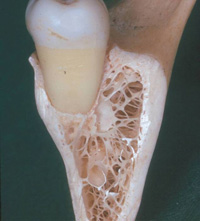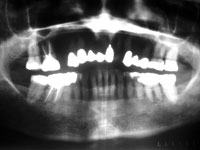From the famous ancient library of Alexandria in Egypt, to the futuristic “singing discs” in H.G. Wells’ The Time Machine, the world of records has been important to the human race. Without records we would have no way of knowing where we came from. Without records it would be impossible to learn from the past and create for the future. Records have always formed the framework for civilization.
Similarly, records in healthcare have always been the backbone of patient treatment as well as the core of risk management. The state boards of dental examiners stipulate accurate record keeping for dentists who face licensing problems. Malpractice insurance carriers consistently advise their doctor-clients that detailed records can halt a malpractice lawsuit. When well-kept and detailed records are presented at the outset of a possible malpractice case, the plaintiff’s attorney(s) may decide that the case is not winnable, and the dentist can be saved from going to court. Records are also essential for documentation and support when dealing with third-party payers. Utilization review and the newer concept of “pay for performance,” or P4P (“Utilization Review and P4P: What Dentists Need to Know”—Dentistry Today, November 2007), hinge on data collection and dispersal.
 |
|
Illustration by Cheryl Gloss
|
In this environment of medical and dental record-keeping requisites, we find ourselves poised between two worlds. On the one hand is the familiar world of paper charts and forms. On the other hand is the wide-open world of electronics. While many disciplines have already embraced electronic data recording, health systems have been slower. The reasons are varied, but include a wide range of available but incompatible software systems, expense, unfamiliarity, and a lack of trained individuals to work with the systems. (Hospitals and physician’s offices report a shortage of clinicians with a background or training in general information technology. Dental practices are no different.)
While a lack of trained clinicians can be an issue for each individual office, incompatible software systems create an “across-the-board” problem. A software program may work fine within the confines of a particular office or hospital, but information may not be structured to flow to another hospital, office, or third-party payer that is not utilizing the same system. As an example, although e-filing for dental insurance claims is commonplace, a clearing house often is still necessary as an intermediary between payers and providers.
With this and other concerns in mind, during 2005, the AHIMA (American Health Information Management Association) and AMIA (American Medical Informatics Association) provided a focus panel to examine common issues concerning electronic records. Besides compatibility, they discovered that a major challenge for the medical, dental, insurance, and government industries is deciding on a standard definition for what constitutes an electronic medical record. Some systems are a compilation of scanned reports and text, while others contain clinical data and details. Proprietary vendor systems make matters worse. Addressing this same issue, the ADA has recently created a Standards Committee on Dental Informatics, which has published a series of Dental Informatics Specifications and Technical Reports that are viewable at ADA.org. One of the purposes of this committee is to address continuity and standardization issues. Without continuity and standardization, the medical and dental community will not be able to catch up to the rest of the world in the areas of information, documentation, and data support.
PRIVACY, RECORDS, AND HEALTH RECORDS BANKS
The Health Insurance Portability and Accountability Act of 1996 (HIPAA) began the push for digitized records, although the advantages of a computerized health record were readily seen prior to that. Hurricane Katrina put record keeping in the spotlight. Displaced persons with little knowledge of their own medical histories, plus medical and dental offices that were destroyed in the aftermath of the storm, highlighted the problems associated with a lack of electronic records. Fragmented record keeping made caring for these patients even more difficult. If electronic records had been the norm, it would have allowed hospital and other healthcare workers to pull up patient histories, allergies, drug dosages and other concerns instantly…possibly preventing many problems and averting potential medical emergencies.
Despite the advantages, electronic records’ privacy and safety issues continue to be a major concern to both providers and patients. In fact, two thirds of consumers contacted during a survey sponsored by the California HealthCare Foundation in 2005 said that computer security problems made them worry about the privacy of electronic health records. More than 50% worried that a lack of control and privacy might enable their employers to access and use their medical information to limit their job opportunities. It does not help that every day there is more news about “lost” (or misappropriated) credit and other computerized database information. Privacy is a definite and ongoing concern.
Despite this general apprehension, one of the goals of HIPAA is to set up a national digitized system whereby providers and patients can have access to a database of health information by utilizing identifier numbers. Patients and providers would each have their own identifier numbers, allowing access to their own records or those of their patients. The records themselves will exist on the Internet or contained within some type of health records bank.
A recently published article (“Are Health Records Banks the Answer?”— Health Data Management, January 2008) provides an extremely detailed and interesting description of a possible system for warehousing confidential health information. The article quotes William Yasnoff, MD, one of the architects of the national health information infrastructure and the keynote speaker at the 2007 Clinical Automation Summit. He recommends health records banks, rather than the Internet, as the best solution for a “sustainable business model for paying for electronic health records systems and exchanging electronic patient data.” As a former senior advisor to the US Department of Health and Human Services, he envisions the creation of local trusts that would build and operate health records banks as central storage locations for medical records information. Expenses would be covered by patients, who would pay collection and maintenance fees.
Health records banks would operate this way: The health records bank would charge fees to individual patients to collect their medical records from physicians, hospitals, dentists, pharmacies, and others, while maintaining them confidentially. No one could access the information unless the patient gave the go-ahead. Dr. Yasnoff believes that a per-patient charge of $5 per month could build and maintain such a bank. The bank would use one portion of that money to maintain the service. Another portion would be used to pay physicians, dentists, pharmacies, and others a certain amount per encounter for the work of submitting the information that they have on file for that patient. He believes that these payments could also fund physician (and dentist?) costs for implementation of an electronic health record system and give providers a remotely hosted electronic record. His theory is that consumers would trust a health records bank more readily than the Internet because individuals already trust their financial and banking institutions. In addition, having patients, rather than providers, pay for maintaining their records would increase provider acceptance.
Others who might also benefit from this plan include software and hardware companies, information technology experts, insurance carriers, computer sales, the government, venture capitalists, and a new entity: the health records bank executive.
Next month we will take a look at additional issues surrounding electronic records, privacy, national provider identifier numbers, and record-keeping essentials, whether paper or digital. We will also talk about how the actor, George Clooney, and HIPAA privacy rules recently came into conflict during a hospital stay.
Ms. Tekavec is the author of the Dental Insurance Coding Handbook, as well as the designer of a dental chart that has been endorsed by the Colorado Dental Association and others. She is also the author of a series of patient brochures explaining various dental procedures. Ms. Tekavec practices as a dental hygienist and is the president of Stepping Stones to Success. She has appeared at all major US dental meetings and is a presenter for the ADA Seminar Series. She can be reached at (800) 548-2164 or via her Web site, steppingstonestosuccess.com.










